Curious about different interior decor styles? This guide covers 20 popular styles, helping you find the perfect look for your space.
Key Takeaways
- Modern and contemporary styles prioritize clean lines and functional spaces, while incorporating natural materials and vibrant accents.
- Eclectic and maximalist designs focus on blending various styles and bold visual elements, promoting personal expression and curated decor.
- Traditional and farmhouse styles emphasize warmth, comfort, and historical charm, often featuring rustic materials and classic furnishings.
Modern Interior Decor Style
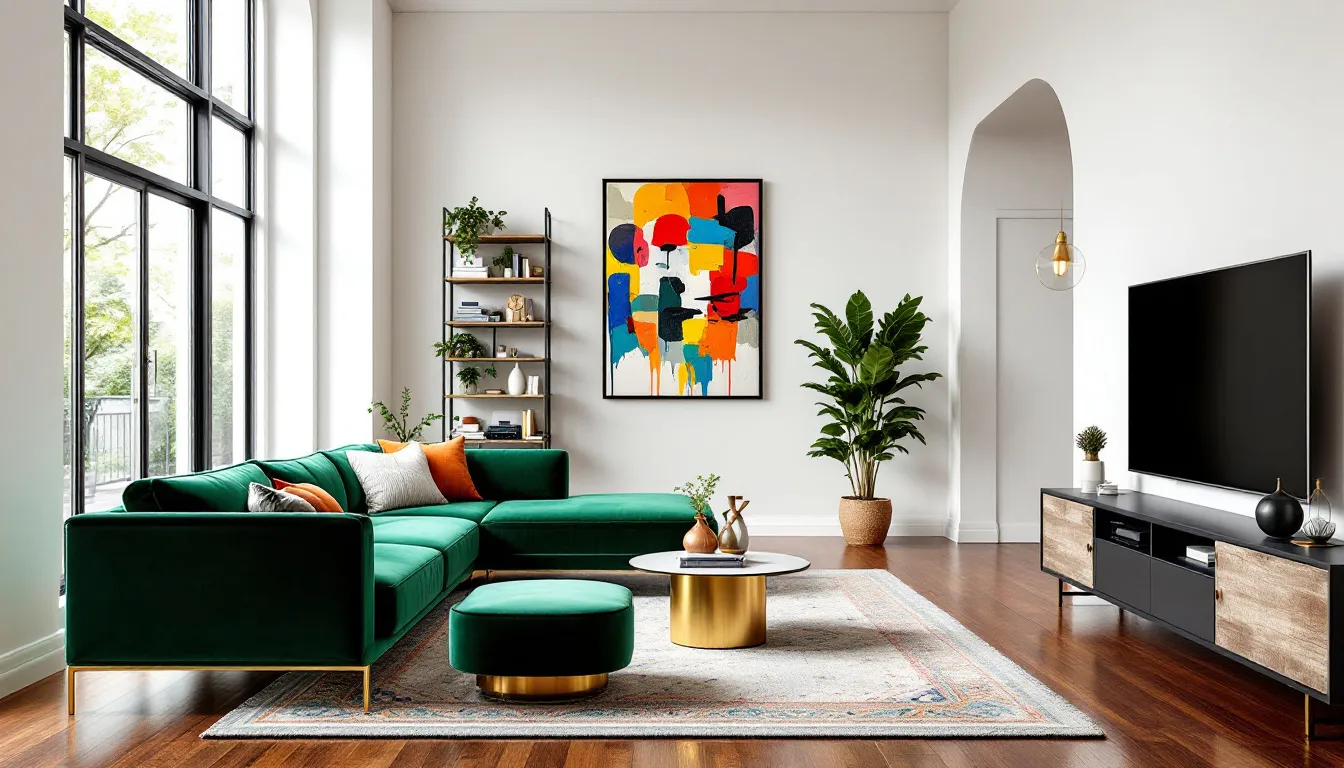
Interior design that falls under the modern category prioritizes functionality with an aesthetic defined by simplicity and minimalism, enabling a sophisticated yet effective living space. This interior design style forgoes elaborate decoration to ensure spaces remain uncluttered and refined. Openness in layout is typical of such designs, fostering serenity and a clean atmosphere which resonates with many popular interior design styles.
When it comes to furnishings within this paradigm, the focus is on streamlined shapes crafted from natural materials that reinforce both practicality and visual purity. Windows are often expansive without being obscured by substantial coverings, allowing copious amounts of natural light to illuminate these interiors — augmenting their already vibrant ambiance. Typically relying on neutral palettes highlighted primarily in black or white shades, these interiors occasionally incorporate bursts of primary colour as a lively contrast.
To introduce elements of cosiness into minimalist interiors without straying from its core principles involves utilizing textiles like curtains and rugs—adding comfort along with textual depth subtly. With only necessary components at play within minimalist designs, landscapes emerge as welcoming while embodying contemporary elegance. They provide unfettered space conjuring up feelings associated with openness concurrent with modern aesthetics.
Contemporary Interior Decor Style
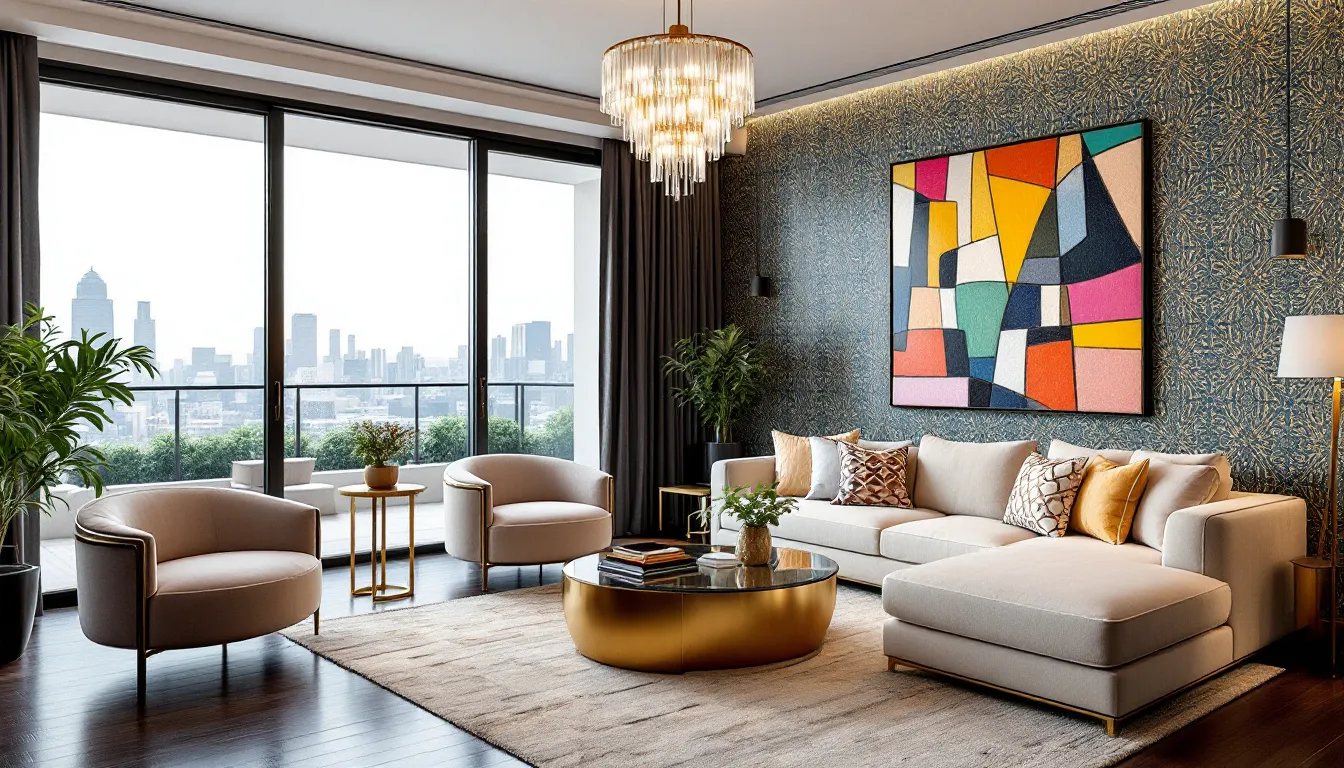
The contemporary design style in interior design is distinguished by its streamlined appearance, spacious floor plans, and a harmonious blend of muted colors with pops of bright accents. It embodies an adaptive and current aesthetic that keeps pace with the latest trends to maintain a sense of modernity within any space. An interior designer would likely recognize the consistent use of clean lines paired with eye-catching colour highlights as hallmarks of this approach, cultivating both visual impact and balanced aesthetics.
Incorporating elements like metal and glass into interiors is typical for achieving the chic edge associated with contemporary designs. The emphasis on open layouts augmented by generous amounts of natural light contributes to creating welcoming environments that can be applied across various settings including residential homes, corporate offices, or commercial retail spaces.
Grounding their schemes in neutral shades complimented by black and white foundations allows designers to embrace this style flexibility when it comes to adding character through judiciously chosen vibrant splashes—a common practice within contemporary styling palettes.
Mid-Century Modern Decor Style
Emerging during the mid-1940s and extending into the early 1970s, the mid-century modern aesthetic developed as a reflection of post-World War II pragmatism. It is distinguished by its uncomplicated shapes, influences from nature, emphasis on clean lines, minimal decorative elements, and an inherent affinity with natural settings.
In terms of furniture design within this movement known as the “mid-century,” commonly used materials include teak, rosewood, and oak, which are often paired with metal or glass to create contrast. The visual interest in these spaces is heightened through bold pops of colours like reds, sages and yellows that harmoniously blend with wood’s earthy hues to foster an environment filled with life and cosiness.
Minimalist Interior Decor Style
The minimalist interior design style is predicated on the idea that ‘less is more’, centreing on simplicity, decluttering and functionality. The hallmark of this aesthetic approach includes key elements such as functional furniture, optimized space arrangements, and an emphasis on clean lines to enhance a minimalistic look.
Distinctive features of minimalist decor include sleek surfaces and pronounced lines coupled with a neutral colour palette. To preserve the tidy appearance characteristic of this style, hidden storage options are often integrated into furnishings. Minimalist design draws its inspiration from Japanese principles which prioritize uncluttered spaces.
Scandinavian Interior Decor Style
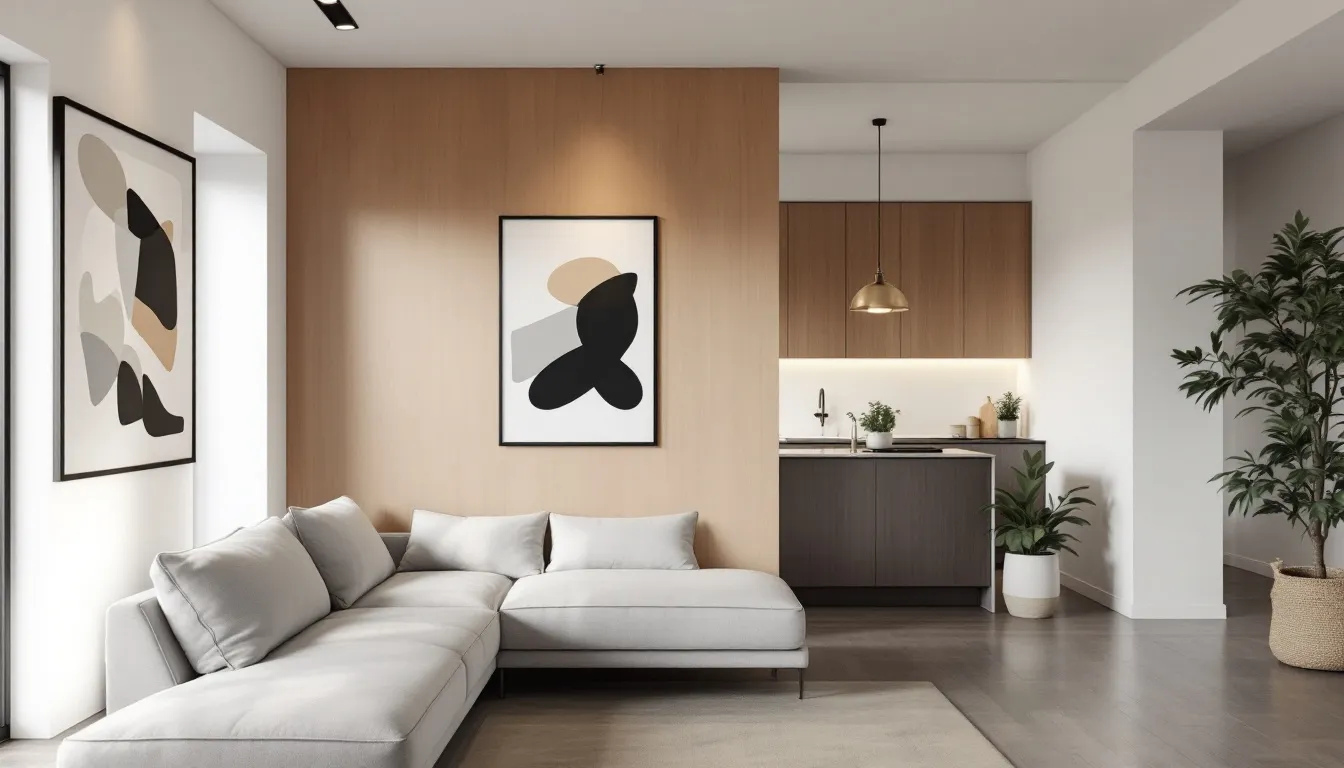
Scandinavian design is characterized by its practical approach, minimalist aesthetic, and the incorporation of light hues along with natural materials. Essential elements within Scandinavian living spaces are neutral colour schemes paired with smooth, clean lines and wooden furnishings, often augmented by warm additions such as plush high-pile rugs.
Light shades dominate the colour scheme in this style of decor – especially white and pale-toned woods – which work to amplify natural light for a spacious and luminous ambiance. The inclusion of plants contributes an element of vitality and connects to nature within these interiors while maintaining the fundamental ‘less is more’ philosophy that defines Scandinavian design.
Shabby Chic Decor Style
Shabby chic decor originated in the 1980s, popularized by designer Rachel Ashwell, and emphasizes comfort and age-old charm. This style creates a cosy living space with key features like distressed furniture, floral patterns, muted hues, and ruffled textiles.
Furniture in shabby chic decor is often sourced from antique stores or flea markets, adding historical depth and vintage charm to the space. The typical colour palette includes creamy whites, pale pastels, and soft neutrals, with ornate mirrors, white-painted floorboards, and natural fabrics enhancing the overall aesthetic.
Eclectic Interior Decor Style
The eclectic interior design style is centred on harmonizing various components from diverse styles, time periods, and locations. The objective is to forge a vibrant and distinctive atmosphere by weaving together these varied elements into a cohesive and visually stimulating space.
In the realm of eclectic interior design, it’s crucial to sustain orderly arrangements to ensure that the area does not seem chaotic, thereby enabling individual creativity. Employing a fundamental colour scheme with neutral tones as its base complemented by an accent hue plays an essential role in blending eclectic items seamlessly and achieving equilibrium within the space.
Industrial Interior Decor Style
The industrial interior design style finds its roots in the transformation of urban loft spaces that were once warehouses. This aesthetic is celebrated for unearthing and showcasing unfinished components such as exposed steel beams and brick walls, which are central to this raw-edged design approach.
In keeping with the functional essence of this design style, furniture selections tend toward practicality and simplicity, often embracing items that exhibit a rough or repurposed look alongside minimalist silhouettes. The lighting choices commonly include metallic shades paired with naked bulbs reflecting an overall no-nonsense attitude associated with the industrial theme. To balance the starkness of this environment, oversized pieces of art along with plush textiles can be incorporated to infuse warmth into these robust industrial settings.
Farmhouse Interior Decor Style
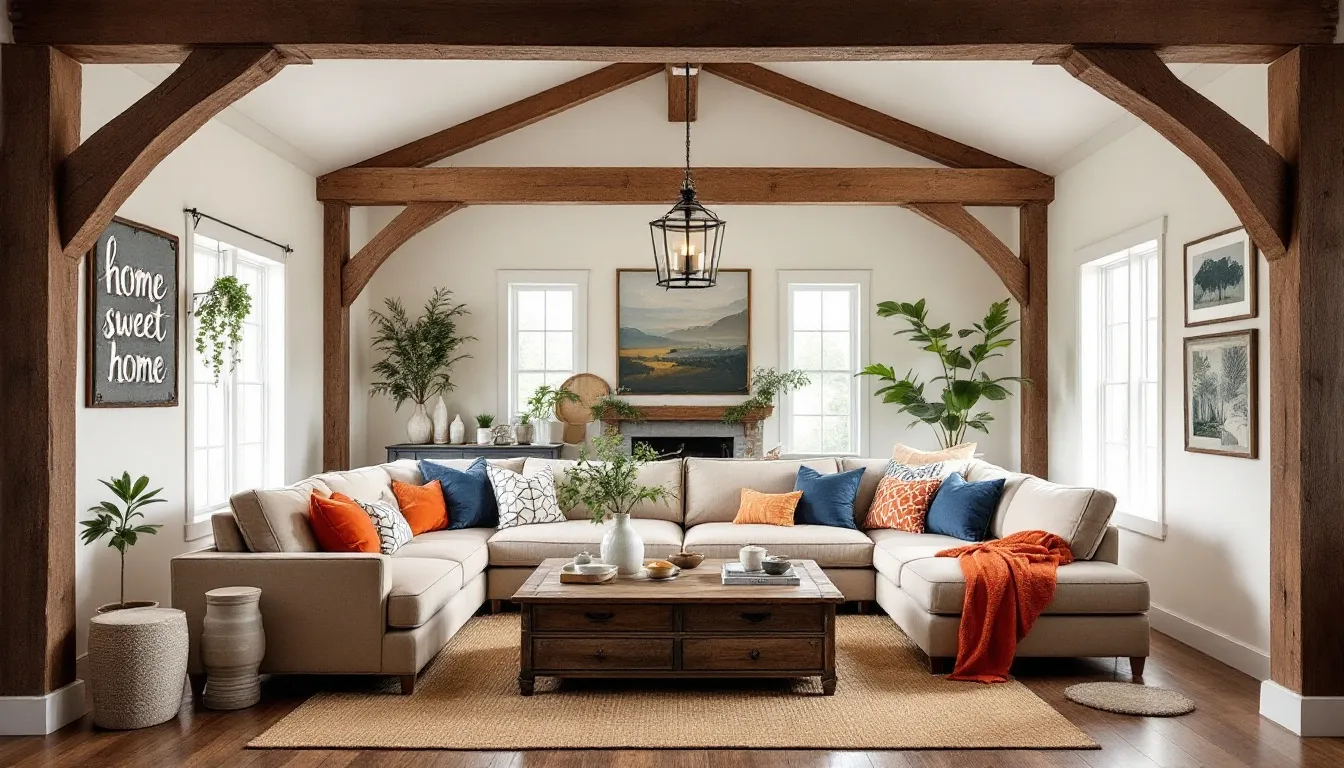
The essence of farmhouse style lies in its embrace of rugged materials, weathered woods, and soothing neutral colour schemes that foster a sense of comfort, warmth, and welcome. Distinctive characteristics comprise worn-out furniture pieces, utilitarian yet cosy fixtures and fittings alongside antiquated decorative items.
Modern farmhouse interiors often leverage a chromatic array that revolves around tranquil neutrals accented by richer hues such as deep navy blue, earthy sage green or intense burnt orange. These tones are skillfully paired with textures like matured timber surfaces along with authentic brickwork or raw stonework to create an inviting ambiance.
Coastal Interior Decor Style
Incorporating elements such as wood, jute, and linen that are derived from nature is central to coastal design. This style exudes effortless elegance and simplicity. The foundational color palette consists predominantly of light neutrals — whites paired with gentle creams are vital in crafting the quintessential breezy vibe associated with the coast.
Whitewashed furnishings, boards adorned with a painted finish, along with accessories like driftwood pieces and seashell embellishments contribute to a setting reminiscent of seaside cottages which promotes relaxation and serenity. Floor coverings crafted from natural materials, including jute or seagrass, introduce both texture and a sense of warmth into the space.
Bohemian Interior Decor Style
Bohemian decor combines various styles and cultural elements to create an eclectic appearance. Its foundation lies in the freedom of creative self-expression, offering each area its own distinctive story.
Characteristics of bohemian interiors include an uninhibited design approach with light, neutral shades, greenery, braided wall decorations, rattan furnishings, assorted motifs and worldly ornaments. This aesthetic typically creates an atmosphere that is both comfortable and vibrant by embracing a purposefully clashing yet homely and welcoming visual appeal.
French Country Decor Style
The essence of French country decor is the seamless blend of rustic charm and cultivated grace, reflecting the tranquil beauty of rural France. This aesthetic highlights gentle, subdued color palettes alongside a harmonious combination of rough-hewn and vintage furniture pieces.
In this design theme, petite patterns like gingham checks, diminutive florals, and classic toile frequently adorn fabrics that accentuate an atmosphere of welcome. These soft motifs are typically paired with organic materials such as timber, earthenware, and flax textiles to forge a warm ambiance within the space.
Art Deco Decor Style
Originating in France in the 1920s, the Art Deco style is characterized by its use of bold geometric patterns, indulgent materials, and deep color palettes. The aesthetic presents a blend of streamlined shapes and symmetrical layouts that convey an air of elegance and grandeur.
In the realm of Art Deco, typical materials include lavish elements like lacquer, brassware, stainless steel along with deluxe upholstery textiles. Not to mention marble as well as rare woods. The incorporation of sumptuous jewel tones – including shades akin to emerald greens, golden hues and sapphire blues, serves to enhance the overall richness and stylishness associated with this design theme.
Hollywood Glam Decor Style
Hollywood Glam style exudes an opulent and luxurious aura, melding components from art deco and mid century modern aesthetics. It frequently employs materials like suede, lacquer, leather, and shimmering metallics that bear striking geometric motifs. The typical palette showcases stark contrasting hues including hot pink against green or black paired with white, punctuated by iconic black-and-white details.
The furnishings in this decor scheme are distinguished by their high gloss or reflective mirrored surfaces which are harmoniously matched with sumptuous fur embellishments. This creates a sophisticated environment tailor-made for lavish entertaining gatherings.
Rustic Interior Decor Style
Rustic style emphasizes natural elements and simplicity, creating a casual aesthetic that feels organic. Materials like weathered wood are essential, found in furniture and architectural features like beams. A rustic colour palette typically features earthy tones balanced with whites and neutral shades, embodying the rustic interior design style.
Textured natural fabrics such as burlap, wool, and linen enhance the warmth and cosiness of rustic spaces, while antique and large reclaimed wooden furniture pieces add character and warmth.
Transitional Interior Decor Style
Transitional style in interior design merges modern and traditional elements, providing a balanced aesthetic that blends traditional elegance with contemporary lines. Common elements include neutral colour palettes, pops of colours, and statement lighting, showcasing different interior design styles and the transitional interior design style.
Materials commonly used include wood, rattan, steel, and lacquer, adding to the versatile character of the style. Furniture harmonizes curves and straight lines, creating a comfortable and inviting feel, with contemporary art often included in traditional home décor to achieve a unique modern twist.
Japandi Interior Decor Style
The Japandi interior design style is a fusion of Japanese and Scandinavian influences that focuses on simplicity, organic shapes with clean lines, and a soothing colour scheme comprising neutrals like beiges, grays, taupes, creams, as well as muted shades of brown and green.
Mediterranean Interior Decor Style
Mediterranean design draws inspiration from the aesthetics of Spain, Greece, and Italy, incorporating Spanish, Italian, and French influences. Key design elements include arched architecture, large communal spaces, and a colour palette reflecting the sky and water, such as blue, white, and terra-cotta.
Textures often feature rich wood tones, rattan, and stone materials, complemented by architectural features such as large windows and exposed beams. Decorative elements like sculptural decor objects and colourful tiles enrich the Mediterranean feel.
Traditional Interior Decor Style
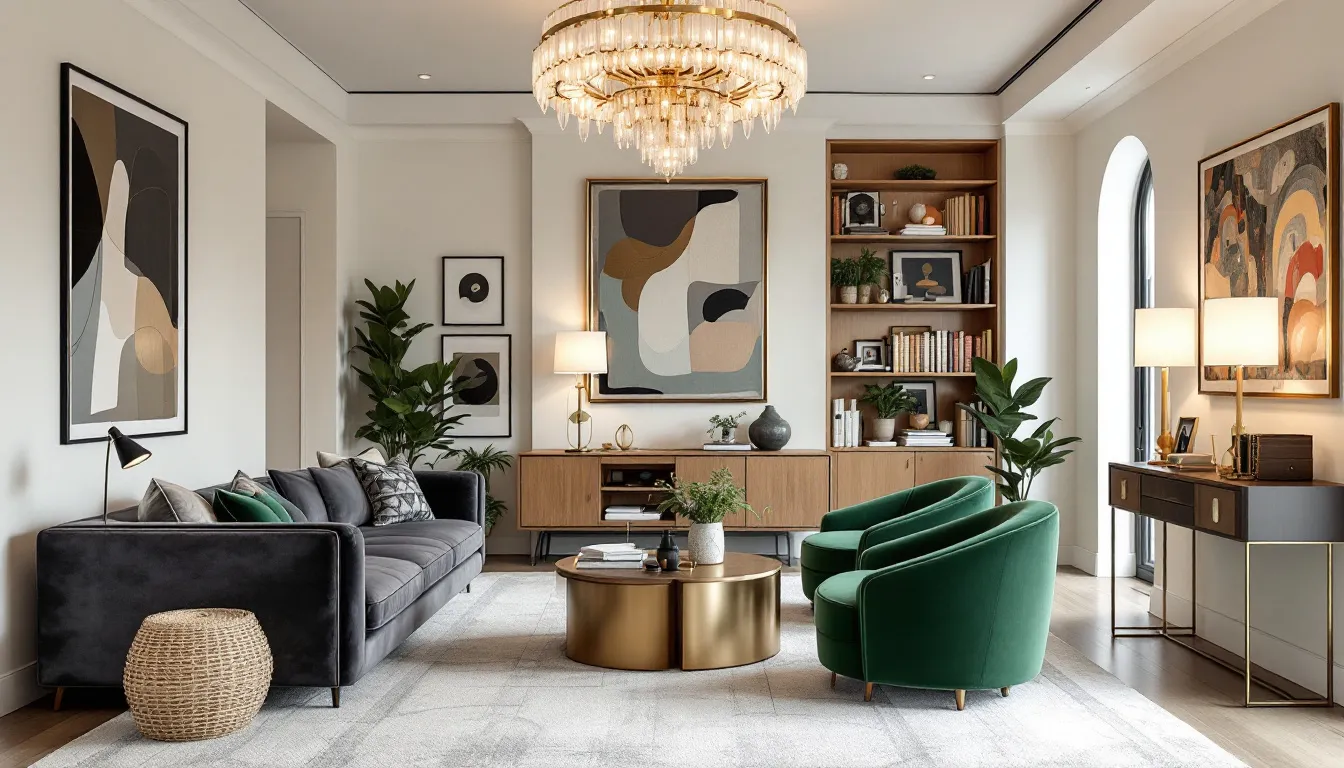
Traditional interior design style is characterized by its roots in 18th and 19th-century European styles, emphasizing warmth, rich textiles, and classic furnishings. Symmetry and order are key principles, creating a familiar and inviting home.
Common materials include dark wood and expensive textiles such as silk, velvet, and linen, with layered window treatments often paired with subtle upholstery fabrics. Patterns like damask, florals, stripes, and plaids are prevalent, and classic decor elements such as chandeliers and built-in bookcases add to the traditional elegance.
Maximalist Interior Decor Style
Embodying a philosophy of abundance, maximalist design is known for its use of bold colours, an array of patterns, and a spirited aesthetic. It reflects the homeowner’s character through purposeful arrangements that dodge the appearance of being overcrowded.
Key features in this decor style are striking wallpapers and mix-and-match patterns accompanied by plentiful decorative items. The artistry in maximalism lies in maintaining harmony within spaces to avoid a sense of randomness. Thus, achieving balance is essential. Intentionally incorporating colour stands as an imperative initial move toward fashioning interiors with a maximalist flair.
Summary
As we explored the top 20 interior decor styles for 2024, it’s clear that each style offers unique elements that can transform any space. From the clean lines of modern decor to the bold statements of maximalism, there’s a style for every taste and preference. Whether you lean towards the simplicity of minimalist design or the eclectic mix of bohemian interiors, the options are endless.
The key to successful interior design lies in understanding these styles and incorporating elements that resonate with your personal taste. By blending different styles or sticking to a single aesthetic, you can create a space that is not only beautiful but also a true reflection of who you are. So, take inspiration from these popular interior design styles and let your creativity shine as you design your perfect home.
Frequently Asked Questions
What is the difference between modern and contemporary interior design styles?**?
The difference between modern and contemporary interior design lies in their approach; modern design focuses on minimalism and functionalism, while contemporary design reflects current trends with a blend of styles and bold accents.
Understanding these distinctions can help in achieving the desired aesthetic for your space.
How can I incorporate Scandinavian design elements into my home?**?
To integrate Scandinavian design features into your abode, focus on the utilization of light shades combined with natural materials while maintaining an emphasis on minimalism and functionality. Opt for wooden furnishings, inviting textiles, and incorporate plants to foster a welcoming environment.
What are the key features of shabby chic decor?**?
Shabby chic decor is characterized by distressed furniture, floral patterns, muted colours, and ruffled textiles, often incorporating vintage pieces for an authentic feel.
This style balances elegance with a cosy, lived-in atmosphere.
How do I achieve a balanced look in an eclectic interior design?**?
To achieve a balanced look in eclectic interior design, focus on maintaining organization, using a cohesive colour palette, and limiting statement pieces.
This approach ensures that different elements harmonize rather than create a cluttered feel.
What materials are commonly used in rustic interior design?**?
Rustic interior design commonly utilizes natural materials, such as weathered wood, textured fabrics like burlap and wool, and non-shiny metal fixtures, to create a warm and inviting atmosphere5
